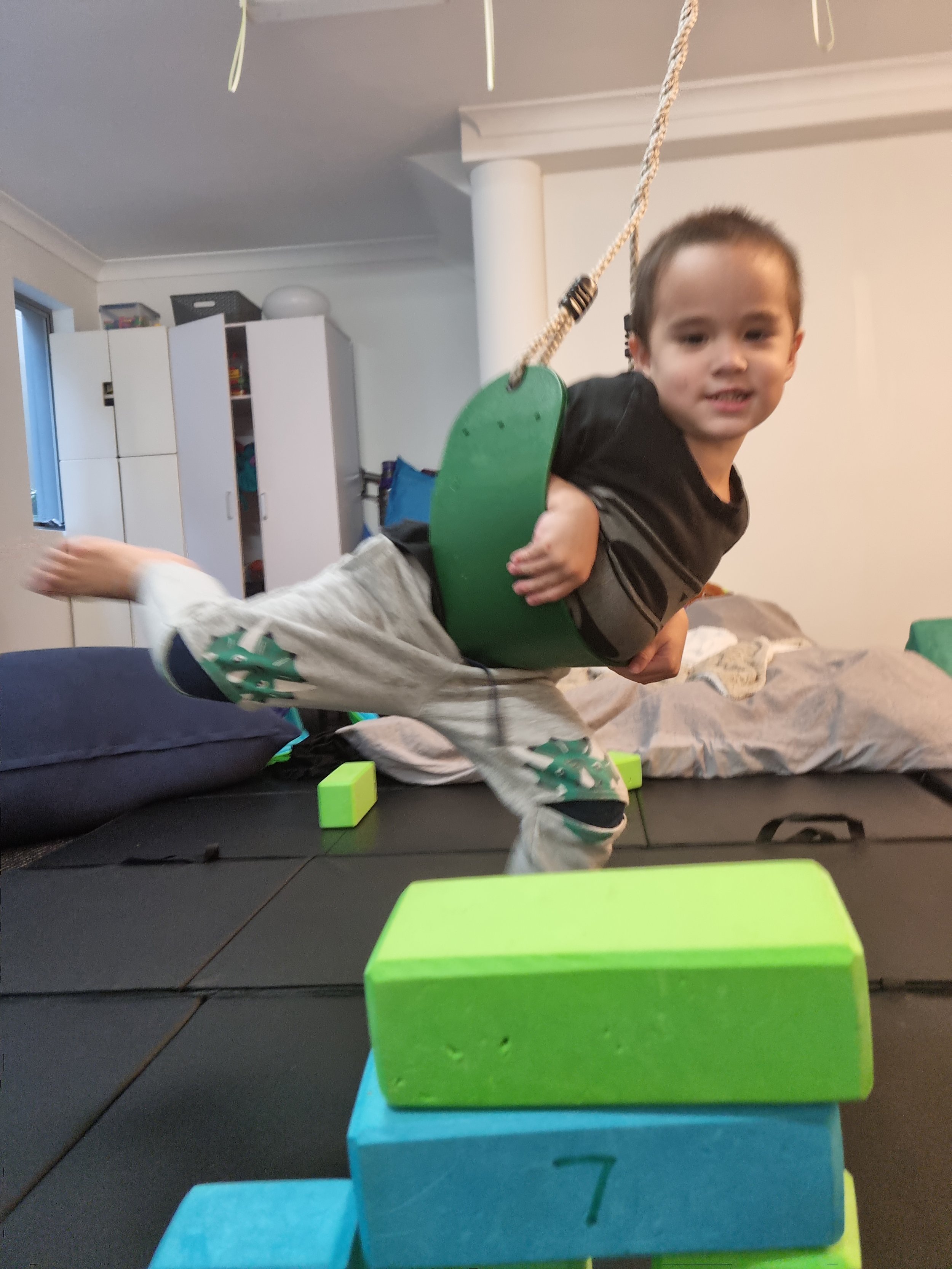
OUR APPROACH
-
DIR / Floortime
One of our key models of practice is the DIR / Floortime model. DIR / Floorime is an evidence-based approach based on the science of human development. It is used to promote an individual's development through a respectful, playful, joyful, and engaging process.
It uses the power of relationships and human connection to encourage the development of the capacities for self-regulation, engagement, communication, shared social problem solving, and creative, organized, and reflective thinking and reasoning. It is used worldwide by teachers, occupational therapists, speech therapists, mental health professionals, parents, and many others.
-
Sensory Motor therapy
Sensory motor skills are the basic foundation for learning
We have eight sensory systems: visual, auditory, olfactory, gustatory, tactile, vestibular, proprioception, and interoception. For some children and adults, the way in which their brain perceives sensory input can impact significantly on their day to day life. Sensory input can be magnified (e.g., the lights are too bright, sounds are too loud), or minimized (e.g., not tuning into voices, being oblivious to pain). Differences in sensory processing can be hard to understand for those who do not experience it however it is essential we understand each child's individual sensory differences in order to understand their behaviour and emotions. Sensory differences can cause considerable overwhelm and can be a barrier to essential skills such as paying attention, learning, managing emotions and behaving "well" in a range of environments.
Motor skills relate to muscles and movement and include crawling, walking, running, handwriting, and speaking. Motor skills give expression to the information our senses receive and process. Movement and sensory processing are integral to all aspects of occupational therapy intervention.
We have a range of equipment to cater for each child’s sensory processing differences whilst also creating motor challenges and experiences from which they can build their gross motor, visual motor and fine motor skills.
-
Polyvagal theory and the Safe and Sound Protocol (SSP)
Polyvagal Theory, developed by Dr Stephen Porges (1994), describes the unconscious and automatic detection of safety or danger using the senses. Our surveillance system is served by the vagus nerve, responsible for exciting and quieting key organs, known commonly as sympathetic and parasympathetic pathways. Stimulation of either pathway sets off a series of three evolutionary nervous system responses. The stages are referred to as social engagement, fight or flight, and shutdown.
The automatic and unconscious change in a child's nervous system response is central to understanding Polyvagal Theory. Behaviour cannot be addressed, nor the child reasoned with, until we understand what is going on below the surface, deep within the nervous system. In other words, to influence behaviour we first need to identify safety and danger cues, and enhance critical co-regulation. This, in turn, promotes the vagal state of social engagement, curiosity, and connectedness. This is central to all we do at Northern Beaches Children’s OT.
The Safe and Sound Protocol is an evidence-based therapeutic tool designed to reset the nervous system and return it to safety. Designed to work with other therapeutic approaches and modalities, the SSP features specially filtered music that stimulates the vagus nerve.
SSP has demonstrated benefits for individuals with trauma, anxiety, sensory processing differences, and much more.
-
Collaborative and Proactive Solutions (CPS)
The CPS model developed by Dr Ross Greene is based on the premise that challenging behaviour occurs when the demands and expectations being placed on a child exceed the child’s capacity to respond. This approach focuses on identifying the skills a child is lacking and the expectations they’re having difficulty meeting. (In the CPS model, those unmet expectations are referred to as unsolved problems.) Then the goal is to help them solve those problems in collaboration with their family and school, rather than trying to modify their behaviour through application of rewards and punishments. This approach is focused on looking underneath the surface and placing he child at the centre and valuing their experiences and input when trying to understand their behaviour. As part of working through this process often a key element is then helping advocate for a child on what expectations of the environment or expectations (placed on them by adults) need to be adapted or accommodated so the child can feel more successful.
